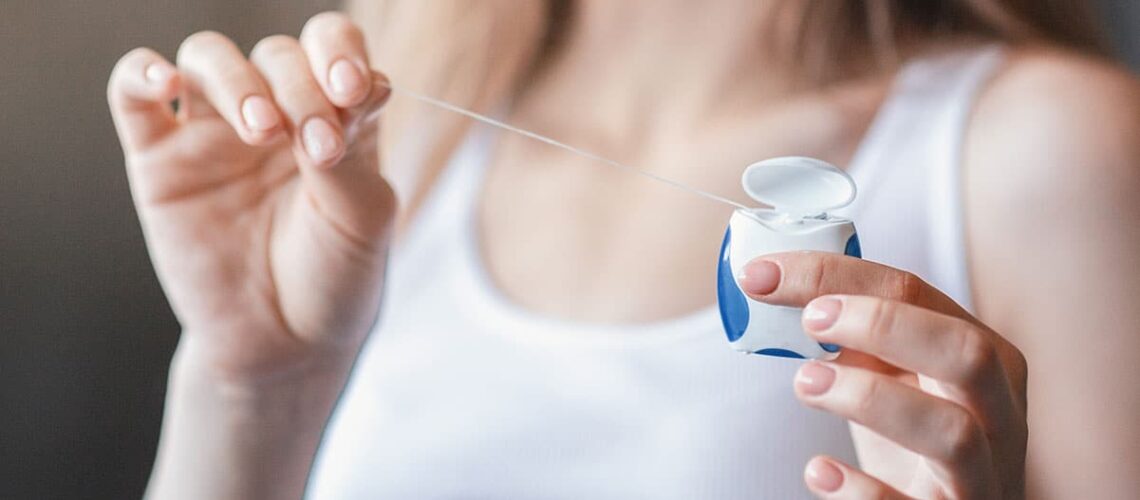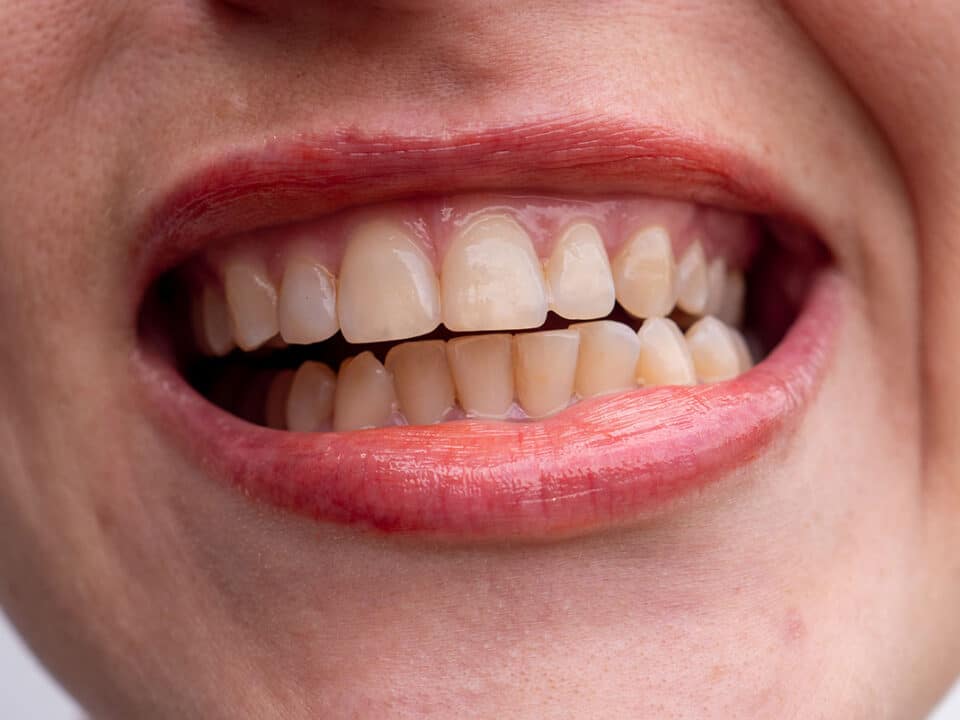Flossing refers to using dental floss or a similar tool to clean between your teeth and along the gumline. It’s an essential part of oral hygiene, helping to remove food particles that get stuck between your teeth, an area that your toothbrush doesn’t clean effectively. This helps reduce harmful bacteria and the buildup of plaque on your teeth. Flossing helps prevent gum disease, cavities, and bad breath by maintaining the cleanliness of these hard-to-reach spaces.
Flossing is a vital part of a proper oral healthcare routine, but unfortunately, not everyone flosses as frequently as they brush their teeth. Only about one-third of adults report flossing daily, while another third say they don’t. Considering how important flossing is to the health of your mouth, these numbers are shockingly low.
Even if you floss, you might not be doing it correctly. That’s right; flossing isn’t just flossing; some things are worth considering to do the job right. It’s worth learning how to floss properly because flossing incorrectly can damage your gums and teeth. That’s why we’ve put together this flossing guide, which will help you learn the best flossing method.
Table of Contents
Is flossing necessary?
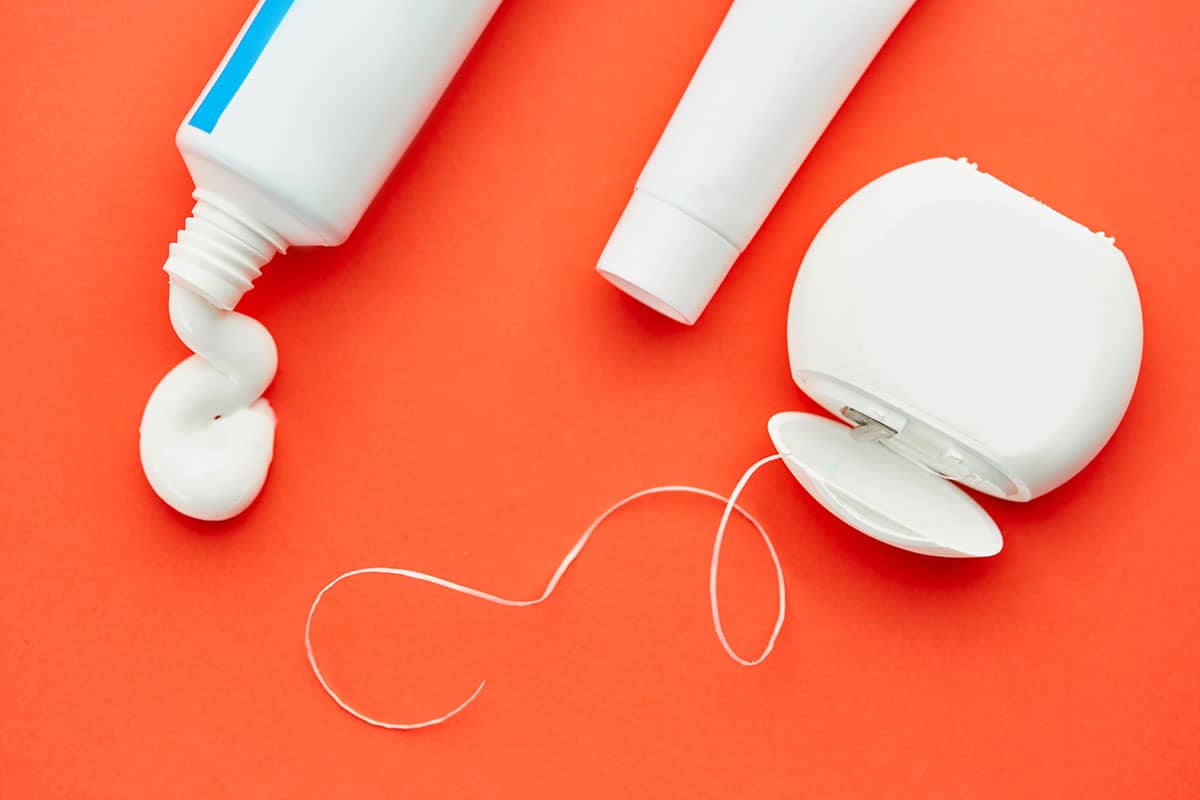
Flossing is vital to maintaining good oral hygiene and overall dental health. While brushing your teeth is crucial for cleaning the surfaces of your teeth, flossing serves the purpose of cleaning the spaces between your teeth and along the gumline.
Of course, flossing your teeth can sometimes be annoying and feel like a chore. Maybe it’s painful, you’re busy, flossing triggers your gag reflex, or you don’t like how your gums bleed. While there are many reasons to avoid flossing, the fact is that flossing is necessary for proper oral hygiene.
How important is flossing?
To floss or not to floss isn’t a question you should ask yourself. Flossing is extremely important because dental plaque (caused by bacteria build-up) is a leading cause of the development of periodontal disease, which can lead to tooth loss. The bacteria and subsequent plaque accumulate most easily in the locations between your teeth, where your toothbrush doesn’t reach effectively. Some form of flossing is required to remove the bacteria deposits between teeth. It’s a preventative measure that makes logical sense – there’s a reason why the entirety of the dental profession says that flossing is important to your oral health and shouldn’t be skipped.
Benefits of flossing
Remove food particles and plaque
Flossing helps remove food particles, plaque, and bacteria from areas a toothbrush can’t reach effectively. These particles can lead to tooth decay, cavities, and gum disease if left untouched.
Help prevent gum disease
Gum disease (gingivitis and periodontitis) can start in the areas between teeth and below the gum line. Regular flossing helps to prevent the buildup of plaque and tartar in these areas, reducing the risk of gum disease.
Freshen your breath naturally
Flossing can help prevent bad breath by removing trapped food particles and bacteria that can contribute to unpleasant odours.
Prevent cavities from forming
Cavities often develop in the spaces between teeth, where toothbrush bristles can’t reach. Flossing helps prevent cavities in these hard-to-reach areas.
Better gum health
Flossing promotes healthy gums by stimulating blood circulation and maintaining the integrity of the gum tissue.
Enjoy overall oral health
Good oral health is about more than just brushing. Flossing, regular dental check-ups, and a balanced diet contribute to maintaining healthy teeth and gums.
How to floss properly in 4 steps
Before we get deeper into the art of flossing, let’s show you how to perfect your flossing technique with this step-by-step guide.
Step 1
Cut a length of dental floss measuring around 18 to 24 inches (45 to 60 centimetres) in length. Firmly wrap the majority of it evenly around the middle fingers of both your hands, leaving approximately 1 to 2 inches (3 to 6 centimetres) of floss exposed in the middle for your teeth.
Step 2
Firmly hold the floss between your thumbs and index fingers, and introduce the dental floss between two adjacent teeth. Use a sawing motion to gently guide the floss, taking care not to let the floss snap into your gumline.
Step 3
Create a curved C-shape with the floss and gently slide it up and down, ensuring it contacts both sides of each tooth all the way down, including just underneath the gumline. Repeat the up/down motion a few times to ensure a proper clean.
(The C-shape enables the floss to access the area between your gums and tooth easily and allows for a complete clean.)
Step 4
Continue this sequence for each tooth, utilizing a fresh portion of floss for every tooth. Don’t forget the back sides of each of your last molars.
Extra tips
- Clean each side of your tooth independently, taking special care to avoid coming straight down on the small triangle of gum tissue in between your teeth.
- Avoid forcing the floss between your teeth so it snaps into your gums, as this could harm them. If the gap between your teeth is tight, a gentle back-and-forth sawing motion will help slide the floss down to your gums.
- Use as little floss between your fingers as possible (1 to 2 inches) to keep your fingers as close to your teeth as possible. This provides greater control and precision as you floss.
- Start in one corner of your mouth and work your way to the other, making sure you floss every gap between your teeth.
Should you floss before or after brushing?

Flossing should ideally be incorporated into your daily oral hygiene routine. The best time to floss your teeth is typically before or after brushing; both activities work together to provide comprehensive oral care.
Before Brushing: Flossing before brushing can help dislodge food particles and plaque from between your teeth and along the gumline. This clears the way for your toothbrush to more effectively clean the surfaces of your teeth.
After Brushing: Flossing after brushing allows you to remove any debris that may have been dislodged during brushing. It can also help ensure you’ve thoroughly cleaned between the teeth and the gum line.
A study has found that flossing before brushing is marginally more effective at removing plaque and allowing for better fluoride retention between teeth.
Ultimately, the order in which you floss and brush is a personal preference. What matters most is that you are consistent with your oral hygiene routine. Flossing at least once daily, whether in the morning, evening or after meals, is essential for maintaining healthy teeth and gums.
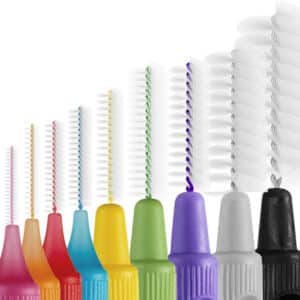
Interdental brushes
These small, cone-shaped brushes can be used to clean between teeth. They are especially useful for people with larger gaps between their teeth or those with difficulty using traditional floss.
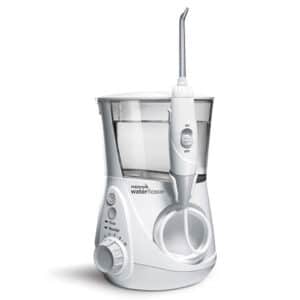
Water flossers (Oral irrigators or WaterPik)
Water flossers use a stream of water to clean between teeth and along the gumline. They can be particularly effective at removing food particles and plaque. Some people find them more comfortable and easier to use than traditional floss.
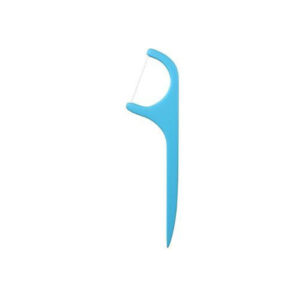
Floss picks
Floss picks are small plastic tools with a piece of floss stretched between two prongs. They can be easier to maneuver than traditional floss, especially for reaching the back teeth.
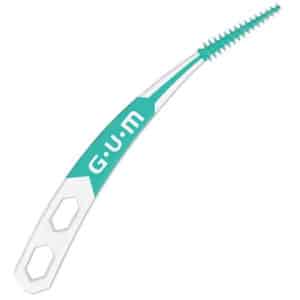
Soft picks or gum soft picks
Like interdental brushes, soft picks are flexible, rubbery devices with bristles that can clean between teeth.
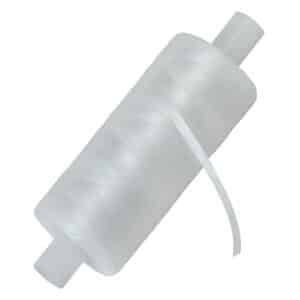
Dental tape
Dental tape is wider and flatter than traditional floss, making it more comfortable for people with sensitive gums or larger spaces between teeth.
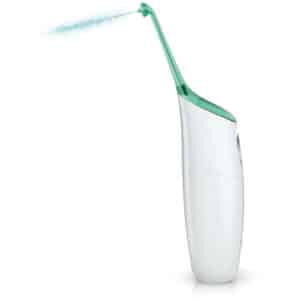
Air flossers
Air flossers use bursts of air and micro-droplets of water to clean between teeth. They are designed to be quick and gentle.
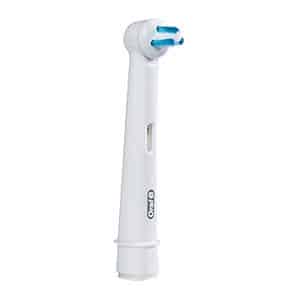
Interdental brush heads for electric toothbrushes
Some electric toothbrushes come with specialized brush heads designed to clean between teeth. These can be effective at removing debris and promoting gum health.
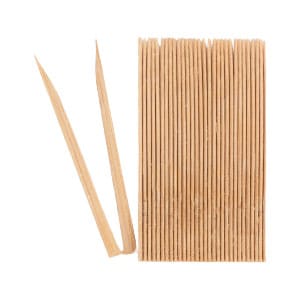
Soft wooden picks
These thin, wooden sticks can be used to clean between teeth. They are especially useful for removing larger food particles.
Other flossing alternatives
The following methods are not direct replacements to flossing but work great in combination with flossing for the ultimate in daily dental hygiene.
Oil pulling
While not a direct replacement for flossing, oil pulling involves swishing a tablespoon of oil (usually coconut oil) in your mouth for about 15-20 minutes. This practice is believed to help remove bacteria and promote oral health.
Chewing gum
Sugar-free chewing gum can help stimulate saliva production, aiding in cleaning the mouth and reducing the risk of cavities.
Whatever method you choose to clean the areas between your teeth and the gumline, the most important thing is to use the tool correctly and consistently. Flossing (or an alternative) should be done at least once daily; ideally every time you brush your teeth.
Types of dental floss our dentists recommend
Take a walk down the oral care aisle of your local drugstore and you’ll notice that dental floss comes in lots of varieties. The best type of dental floss for you depends on your personal preference, the spacing of your teeth, any dental work you might have (like braces or bridges), and your overall oral health needs. It’s important to choose a type of floss that you find comfortable and easy to use so that you’re more likely to maintain a consistent flossing routine. If you want our professional opinion, call one of our dental offices.
Unwaxed dental floss
This floss is made of nylon and is thin and flexible. It can fit into tight spaces between teeth, making it suitable for people with closely spaced teeth. However, it may be more prone to shredding or breaking.
Waxed dental floss
Waxed floss has a coating that makes it smoother and less likely to fray or shred. It can glide more easily between teeth and is a good option if you have rough or sensitive gums.
Dental tape
Dental tape is broader and flatter than regular floss. It’s ideal for people with more space between their teeth and those who prefer a wider cleaning surface.
Super floss
Super floss is designed with a stiff end, a spongy middle, and regular floss on the other end. It’s often used for cleaning under bridges, braces, or other dental appliances.
Is flossing more important than brushing your teeth?
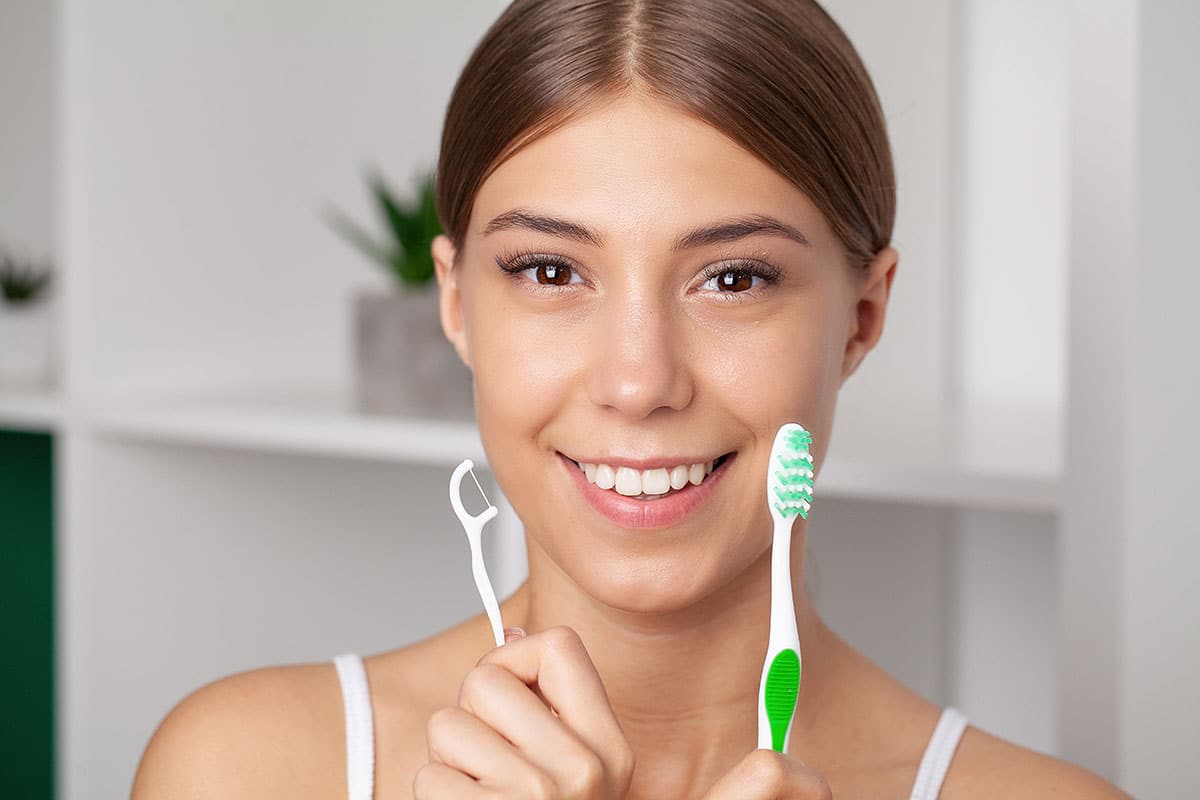
As dentists, we sometimes get asked is flossing better than brushing your teeth. Flossing is not necessarily “better” than brushing, nor is brushing better than flossing. They serve different purposes, and both are essential for a comprehensive oral hygiene routine. Neglecting either can result in incomplete cleaning and an increased risk of dental problems.
While it’s not an either/or thing for taking care of your mouth, flossing could be more important in the long run if you could only pick one (and this might sound odd). Hear us out.
Both brushing and flossing work against plaque build-up on your teeth. Plaque comprises destructive bacteria that eat sugars and carbohydrates and then excrete them on our teeth. While brushing can only remove plaque from the visible surfaces of teeth, flossing works between teeth and underneath the gumline. These hard-to-clean areas happen to be where the most destructive microbes reside. Cavities are most common between the teeth, and failure to clean plaque from these areas leaves patients at risk of gum disease and periodontitis.
That said, our recommendation is still to brush twice daily, floss once, and ensure you do it every day.
Is flossing bad for you?
Flossing itself is not inherently bad for you; in fact, it’s necessary for maintaining good oral hygiene. That is, if you’re doing it properly. Bad or improper flossing techniques can damage your gums and cause issues, so be careful and make sure you’re doing it right.
Just like brushing your teeth, there are mistakes to avoid while flossing to ensure you’re cleaning your teeth without harming them.
Flossing aggressively
If you floss using excessive force, you could potentially damage your gums or cause them to bleed. It’s important to be gentle and use a proper flossing technique.
Incorrect technique
Using improper flossing techniques, such as snapping the floss down between teeth or sawing back and forth, could potentially harm your gums and cause irritation. The correct technique involves gently sliding the floss between teeth, forming a C shape around each tooth, and moving the floss up and down.
Flossing too often
Flossing too frequently, especially with excessive force, could lead to gum irritation or damage. Once a day is generally sufficient for most people.
Using contaminated floss
If you’re reusing the same piece of floss without properly cleaning it, you could introduce bacteria and contaminants into your mouth. Always use clean floss or floss picks for each use.
Using the wrong kind of floss
Using too thick or rough floss for your teeth and gums could cause discomfort or bleeding. If you’re experiencing these issues, consider using a thinner floss or an alternative interdental cleaning tool.
Is flossing good for gums?
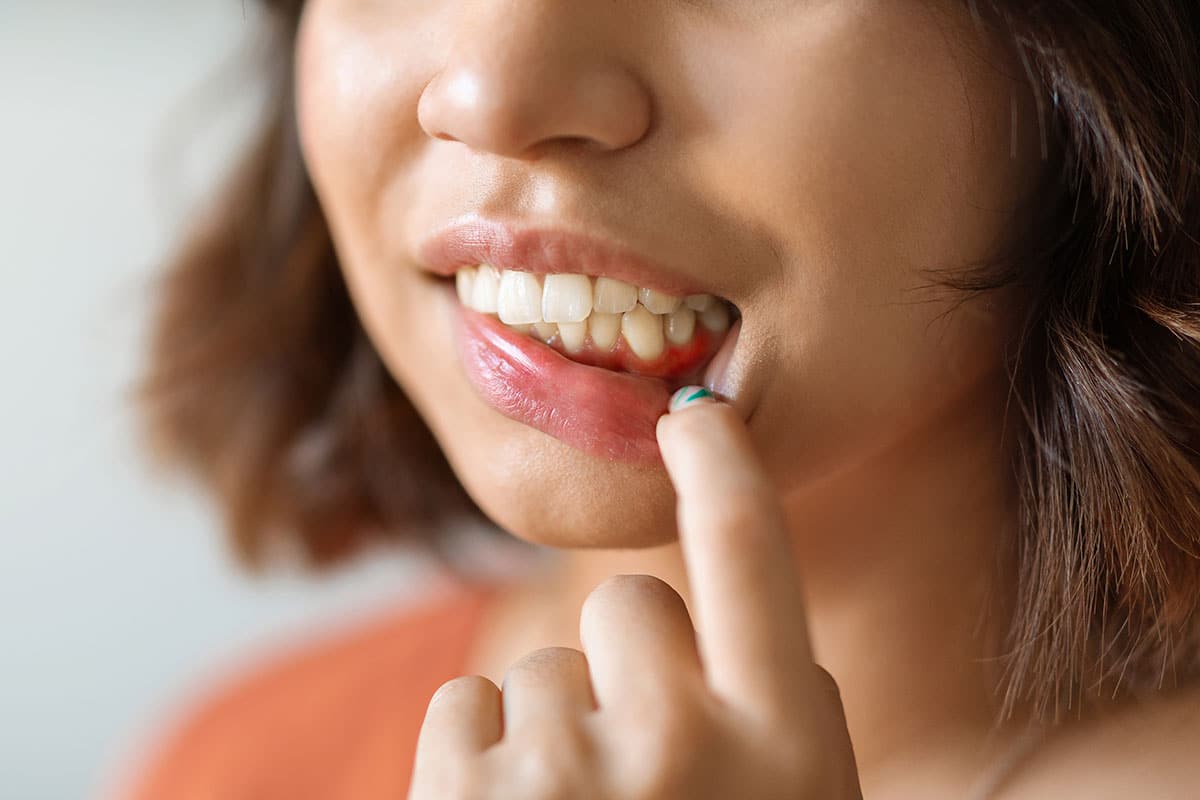
Yes, flossing is good for your gums, but only if you floss with good technique because getting it wrong can damage your gums.
Flossing promotes healthy gums by helping remove food particles, plaque, and bacteria from the spaces between your teeth and the gum line. On top of preventing gum disease, reducing gum inflammation, preventing gum recession and promoting a strong tooth-gum junction, it can also help stimulate your gums to keep them strong and healthy.
Why do my gums bleed while flossing?
Most of the reasons your gums bleed while flossing are related to oral health issues or improper flossing technique.
The problem is usually that inadequate brushing and flossing have led to plaque buildup along the gumline. Plaque contains bacteria that can irritate and inflame the gums, causing them to bleed when touched.
Gums that are already irritated and inflamed will certainly bleed when flossing, and bleeding gums is often one of the first signs of gingivitis.
Implementing a proper flossing routine will help remove bacteria and plaque to reduce inflammation while toughening and strengthening your gums.
Gums will also bleed if you’re not used to flossing. Infrequent flossing means your gums will be sensitive to flossing once you start and may bleed, but don’t worry; after a week of consistent flossing, the bleeding should stop.
Of course, it’s important to floss properly, as aggressive flossing will cut into your gums, causing damage and bleeding. Some people also have naturally sensitive gums, in which case even gentle flossing may cause bleeding. In this case, using a soft floss or switching to an alternative method such as oral irrigation can help.
Other reasons for your gums bleeding from flossing
Medications: Certain medications, such as blood thinners, can increase the likelihood of bleeding gums. Discussing any bleeding issues with your healthcare provider is a good idea if you’re on medication.
Pregnancy: Your oral health during pregnancy can be sensitive. Hormonal changes during pregnancy can cause gum sensitivity and bleeding. Maintaining good oral hygiene and regular dental visits are especially important during pregnancy.
Medical Conditions: Medical conditions like diabetes or blood disorders can make gums more prone to bleeding. If you have any underlying medical conditions, it’s important to discuss gum bleeding with your healthcare provider.
What about flossing with a permanent retainer or braces?
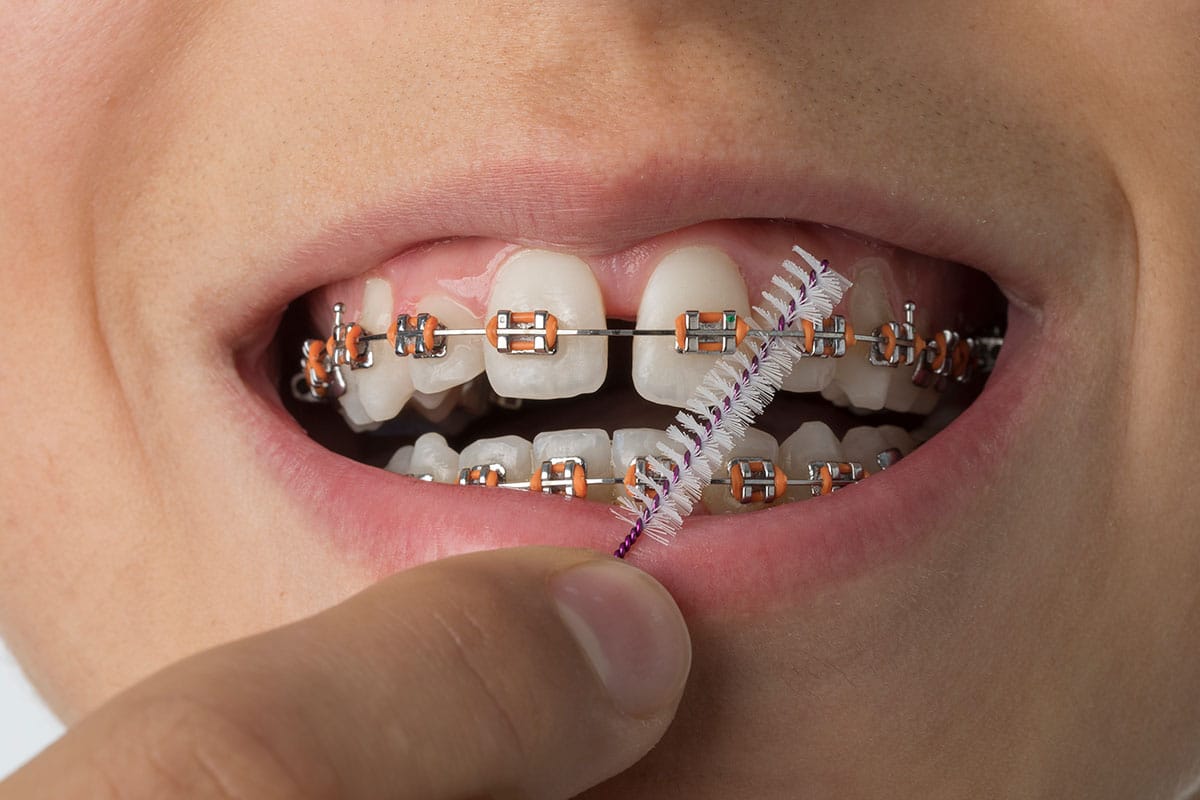
Flossing with a permanent retainer can be a bit trickier than traditional flossing, but it’s still important to maintain good oral hygiene around the retainer to prevent plaque buildup and gum issues. Flossing with braces or a retainer usually takes longer and requires a combination of methods to do properly, but it can and needs to be done. To help make the job easier, consider the following options:
Use a floss threader
A floss threader is a small plastic tool that can help you guide floss underneath the retainer wire. Here’s how to use it:
- Take a piece of dental floss (usually about 18 inches long) and thread one end through the loop of the floss threader.
- Gently insert the pointed end of the floss threader under the retainer wire, positioning it between two teeth.
- Once the threader is through, pull the floss through the loop to bring it under the wire.
- Hold both ends of the floss and gently slide it up and down between the teeth to clean the sides of the teeth and the area beneath the retainer wire.
Use a waxed floss
Waxed floss is smoother and less likely to get caught on the retainer wire than unwaxed floss. This can make flossing around the retainer easier and more comfortable.
Take your time
Flossing around a permanent retainer might require a bit more patience. Take your time to thread the floss under the wire and maneuver it between the teeth. Be gentle to avoid damaging the retainer or injuring your gums.
Always be thorough
Make sure to floss each side of every tooth to remove plaque and food particles effectively. Move the floss up and down and slightly under the gumline for a thorough clean.
Use interdental brushes
Interdental brushes are small brushes designed to clean between teeth and around dental work like braces and retainers. If flossing is challenging, you might find interdental brushes around the retainer wires easier to use.
Use a water flosser
Consider using a water flosser (oral irrigator) with a special tip for cleaning around dental work. A water flosser uses a stream of water to clean between teeth and can effectively remove debris around a retainer.
Should I gloss if I have porcelain veneers or dental implants?
Even if you have porcelain veneers or implants, you still need to floss. With veneers, the underlying tooth (teeth) are still vulnerable to the effects of bacteria and plaque, while with dental implants, the health of your mouth will still be at risk. Keeping your oral hygiene routine in proper order is necessary for a healthy mouth, regardless of veneers or implants.
In conclusion:
Proper oral hygiene is essential to prevent issues like cavities, gum disease, and plaque buildup from damaging your smile. That’s why it’s important to floss properly and regularly to maximize its benefits for your teeth and gums. If you struggle with traditional floss, explore alternative interdental cleaning tools such as water flossers, interdental brushes, or soft picks. If you’re unsure about the best flossing technique for your situation, consider consulting your dentist or dental hygienist for guidance.
Check us out on Facebook and Twitter for daily information about Oral Health from Martindale Dental, or visit our offices in Hamilton and St. Catharines.
Have more questions?
Please contact us for all inquiries or to book an appointment with one of our convenient clinic locations. We look forward to hearing from you.

